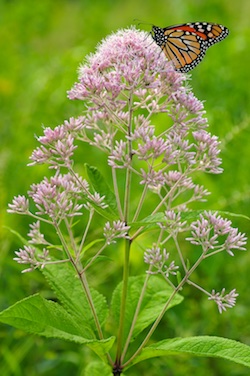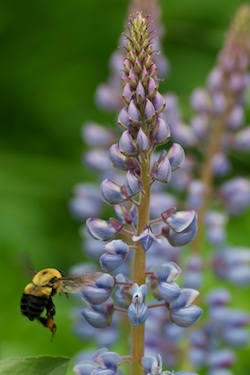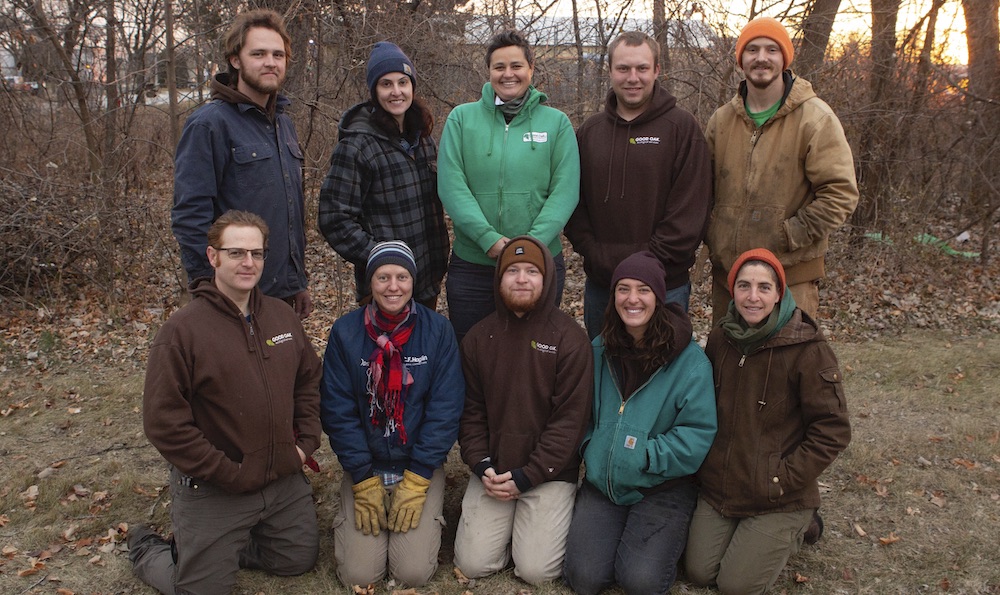Background on the Stream Corridor Restoration
Starting in the spring of 2016, Good Oak has been working with the City of Madison Engineering division on a “vegetation management” project. What this really entails is rescuing a stretch of stream shoreline that has become overcome with invasive plants just a few years after a major shoreline reconstruction project.The section of Starkweather Creek in question runs from Commercial Avenue on the north end down to Milwaukee Avenue on the south. In the middle is the busy East Washington Avenue corridor. In 2008 the City initiated work along shoreline of the creek here to stabilize the shoreline and provide an aesthetic improvement to a scruffy-looking part of the creek.
Prairie is the ideal plant community to establish along these stream corridors. The deep, diverse roots of prairie plants do an excellent job holding the soil, preventing erosion and stabilizing the entire shoreline soil mass. The roots, stems and leaves of the prairie plants capture inflowing water, slowing it down and helping to filter out silt, nutrients and other pollutants that might otherwise flow into the creek. The prairie wildflowers provide nectar and pollen for pollinators, and other parts of these plants are the natural food for many beneficial insects, birds and other creatures. Finally, a well-managed prairie is a beautiful sight, with tall native grasses and a variety of wildflowers blooming throughout the growing season, and who’s structure provides winter interest as well.
Establishing a healthy natural community, in a previously weedy area that has recently had heavy equipment operating in it, is no easy task. Prairie seed was spread in the vegetative corridor on either side of the creek in 2008, but the innumerable invasive plants and seeds that were already established on the site quickly overwhelmed the prairie seedlings. Despite efforts in the years following to suppress weeds in this area, by the spring of 2016 invasive plants dominated this entire stream corridor.
Ecological Dead End
When evaluating the site in the early spring of 2016, I estimated that exotic invasive plants cover roughly 90% of the vegetative buffer area. |
| Reed canary grass along the Starkweather Creek north of the project area. |
The most abundant invasive plant in the project area, by far, is reed canary grass (Phalaris arundinacea). It probably accounted for 80-85% of the plant cover, all by itself, when we started work this spring. Reed canary grass is the most destructive invasive plant in the midwest. According to the University of Wisconsin - Green Bay Herbarium, reed canary grass is “the worst invasive species in Wisconsin, to date” having destroyed more native plant cover than any other invasive species in the state, and throughout the Midwest.
It can spread rapidly by both rhizomes and seed and aggressively displace native plants in wet and moist sites and along shorelines. It is particularly aggressive in disturbed sites, sites with high water/soil nutrient and silt loads, and fluctuating water levels... all of which are the case with Starkweather Creek. It is poor at erosion control because its shallow and coarse root system are easily undercut, not a desirable trait for a shoreline stabilization project.
 |
| Canada thistle is a difficult weed to control. |
There are many other invasive plants in this area including: Kentucky bluegrass, quack grass, brome grass, orchard grass, fescue, garlic mustard, great burdock, Canada thistle, plumeless thistle, sweet clover, and wild carrot. In addition to these exotic weeds, Canada goldenrod also has a significant cover. This species is native, and its yellow early-fall flowers provide nectar and pollen for bees, butterflies and other pollinators. However, it is a very aggressive species that can form monocultures that exclude other plants, particularly in disturbed sites and young prairie plantings.
 |
| Though native to Wisconsin, Canada goldenrod can spread aggressively and exclude other plants. |
A Plan for Restoration
Control of reed canary grass is extremely difficult. Mowing and burning can weaken the plants, but a herbicide application is necessary to kill the roots. Even when herbicide is applied, reed canary grass readily resprouts from dormant buds. If live plants are killed off after multiple herbicide applications, new seedlings will emerge from the seedbank. Therefore, multiple years of treatment are needed to eradicate reed canary grass from any site.In early summer 2016, we began managing reed canary grass by mowing during their blooming period to weaken the plants and to prevent them to from developing seeds. We also spot-herbicided broadleaf weeds and removed invasive brush during several trips in late-spring and summer. Due to the wet and warm growing season we had, we needed to mow the reed canary grass again in August to set it back further. We also mowed the Canada goldenrod at this time.
Thought there is still a long road ahead, we’re beginning to see positive results from our weed management work: Patches of prairie grasses such as big bluestem and indian grass are waving their seed-heads high this fall. Several prairie flowers managed to bloom this summer including the yellow, black-eyed Susans and false sunflowers, as did some hoary vervain, purple coneflower, marsh milkweeds and New England asters.
 |
| marsh milkweed |
 |
| hoary vervain |
 |
| false sunflower |
 |
| black-eyed Susan |
 |
| New England aster |
We’re now gearing of for what will be a substantial herbicide application to this reed canary grass. By waiting until late-fall, we can avoid accidentally harming native plants in the area which have largely gone dormant for the season, but effectively treat the reed canary grass which is still green and growing in mid-November… especially during this unusually warm fall. So,
A Few Words about Pesticide Application
The herbicide we are using to control reed canary grass is called AquaNeat. AquaNeat is a special, “aquatic-approved” formulation with the active ingredient is glyphosate. Glyphosate has been tested to be “low to very low toxicity” to animals, it has been described as being roughly as toxic as table salt. In warm conditions, it can break down completely within two weeks (it will no doubt take longer to break down in November and into winter). It binds well to clay particles in the soil so it has a low likelihood of being washed into the stream or into our lakes.We only use as much herbicide as is necessary to kill the invasive plants that we are targeting, being careful to avoid overspray onto other plants and elsewhere in the surroundings. Everyone on our Good Oak field crew is license to apply herbicide in Wisconsin, and we all practice a variety of safety techniques to limit exposure to ourselves and the environment.
Due the abundance of caution we practice with any pesticide, we’d recommend staying out of the area until the blue dye is no longer visible. The dye is more persistent than the herbicide itself, so the lack of visible dye should indicate there is no longer any herbicide present. If you do find blue dye on yourself, your clothes, or your pet, simply wash with soap and water to remove.
2017, and Beyond
While 2016 has focused on weed control, 2017 should see the site less dominated by the worst invasive plants… but then what? Early in 2017 we’re again planning an herbicide application to reed canary grass and broadleaf weeds. Then we need to observe the site and see how the vegetation is reacting. Will other invasive plants sprout to take the place of the weeds we are controlling? Will native plants that have been suppressed by the weeds grow with more vigor? Will new prairie seedlings sprout from dormant seeds?Mostly likely, all of these things will occur, and more. While the majority of the herbicide application will be behind us, in 2017 and 2018 we’ll be spot herbiciding, mowing, pulling and doing other work to control the well established weed populations, and prevent new ones from sprouting. We’ll be spreading additional prairie, savanna and wetland seed in either the spring or fall of 2017, once we feel enough of the invasive plants have been suppressed that new prairie seedlings will have a good chance of getting established. We’d love to get help from volunteers as the project moves forward, doing more planting of prairie wildflowers and maybe even weed pulling.

















